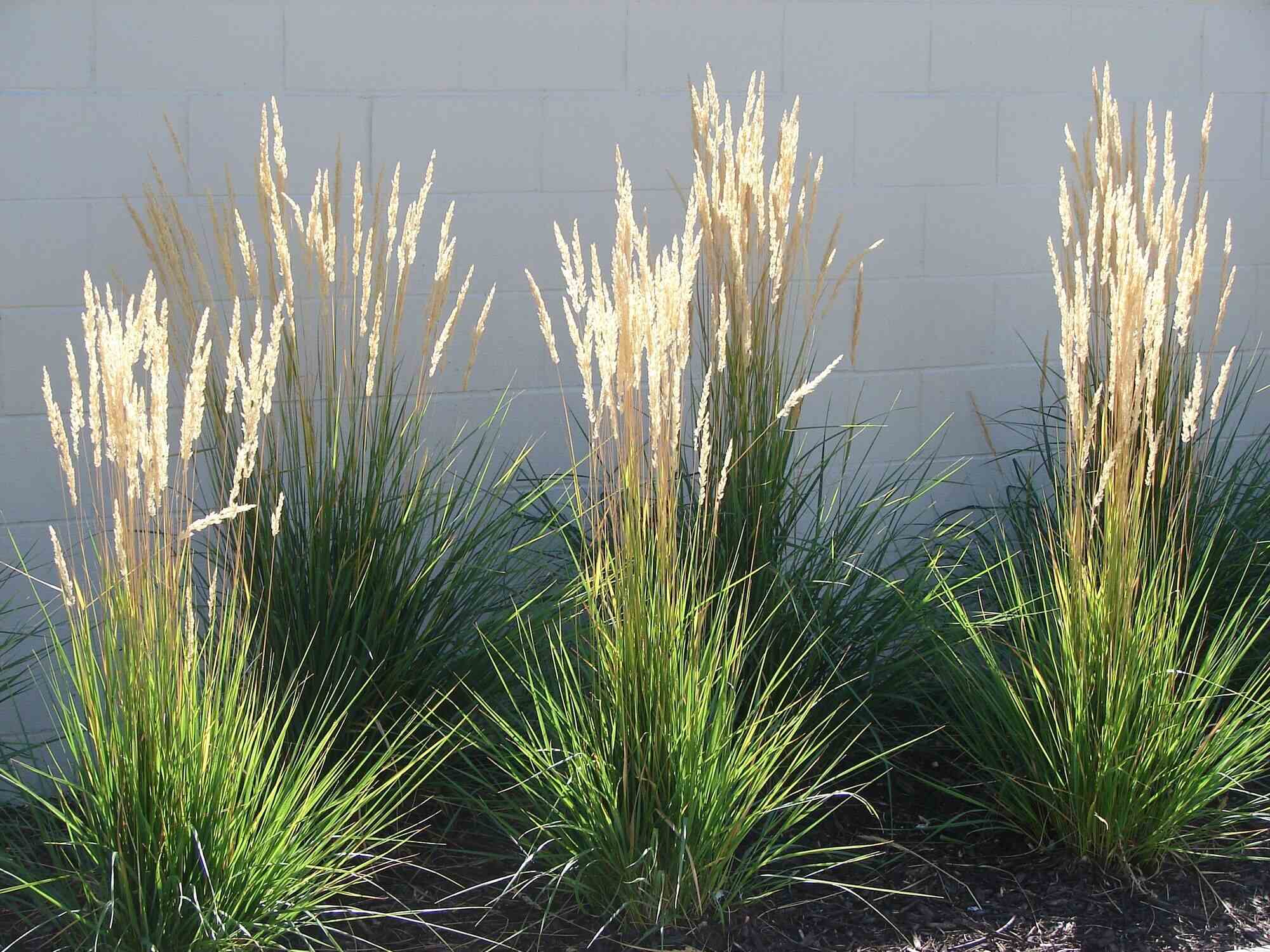
Feather reed grass, known scientifically as Calamagrostis x acutiflora, is a popular ornamental grass that adds elegance to gardens and landscapes. Why is feather reed grass so beloved by gardeners? Because it’s hardy, low-maintenance, and visually striking. This grass thrives in various climates, from hot summers to cold winters, making it versatile. Its tall, slender stalks sway gracefully in the wind, creating a dynamic visual effect. Feather reed grass also provides year-round interest, with its feathery plumes turning golden in the fall and standing tall through winter. Whether you're a seasoned gardener or a newbie, this grass can elevate your outdoor space effortlessly. Ready to learn more? Let's dive into 33 fascinating facts about feather reed grass!
Feather Reed Grass: An Overview
Feather reed grass, also known as Calamagrostis x acutiflora, is a popular ornamental grass. Its tall, slender stalks and feathery plumes make it a favorite in gardens and landscapes. Here are some fascinating facts about this versatile plant.
-
Feather reed grass is a hybrid species, a cross between Calamagrostis arundinacea and Calamagrostis epigejos.
-
It was first discovered in Germany in the 1930s by Karl Foerster, a renowned horticulturist.
-
This grass is known for its upright growth habit, reaching heights of up to 5 feet.
Growth and Care
Understanding how to grow and care for feather reed grass can help you make the most of this beautiful plant in your garden.
-
Feather reed grass thrives in USDA hardiness zones 4 to 9.
-
It prefers full sun but can tolerate partial shade.
-
Well-drained soil is essential for optimal growth.
-
This grass is drought-tolerant once established, making it a low-maintenance option.
-
It can be planted in spring or fall.
-
Regular watering is necessary during the first growing season to establish a deep, extensive root system.
Seasonal Changes
Feather reed grass offers visual interest throughout the year, changing with the seasons.
-
In spring, new shoots emerge, providing fresh green color.
-
By early summer, feathery plumes appear, adding texture and movement.
-
The plumes turn golden in late summer, creating a striking contrast against the green foliage.
-
In fall, the foliage turns a warm, golden-brown color.
-
During winter, the dried stalks and plumes add structure and interest to the garden.
Benefits and Uses
Feather reed grass is not only beautiful but also offers several practical benefits.
-
It is an excellent choice for erosion control due to its extensive root system.
-
This grass can be used as a privacy screen or windbreak when planted in groups.
-
It attracts birds, providing them with seeds and shelter.
-
Feather reed grass is deer-resistant, making it a good option for gardens in areas with deer populations.
-
It can be used in cut flower arrangements, both fresh and dried.
Varieties and Cultivars
There are several popular varieties and cultivars of feather reed grass, each with unique characteristics.
-
'Karl Foerster' is the most well-known cultivar, prized for its upright growth and early flowering.
-
'Overdam' features variegated leaves with white margins, adding extra visual interest.
-
'Avalanche' has a white stripe down the center of each leaf, creating a striking appearance.
-
'Eldorado' boasts golden-yellow stripes along the edges of its leaves.
Environmental Impact
Feather reed grass can have a positive impact on the environment in various ways.
-
It helps improve soil structure and fertility by adding organic matter.
-
This grass can sequester carbon, helping to mitigate climate change.
-
It provides habitat for beneficial insects, such as pollinators and predators of garden pests.
-
Feather reed grass can be used in phytoremediation projects to clean up contaminated soils.
Common Issues and Solutions
While feather reed grass is generally low-maintenance, it can encounter some issues.
-
Overwatering can lead to root rot, so ensure the soil is well-drained.
-
It can be susceptible to rust, a fungal disease that causes orange spots on the leaves.
-
Cutting back the grass in late winter or early spring can help prevent disease and promote healthy growth.
-
Dividing the grass every few years can prevent overcrowding and maintain vigor.
Interesting Tidbits
Here are a few more intriguing facts about feather reed grass that you might find surprising.
-
Feather reed grass has been awarded the Royal Horticultural Society's Award of Garden Merit.
-
It is often used in public landscaping projects due to its hardiness and low maintenance requirements.
Final Thoughts on Feather Reed Grass
Feather reed grass isn't just another plant in your garden. Its elegant appearance, hardiness, and low maintenance make it a top choice for many gardeners. Whether you're looking to add some vertical interest or need a reliable plant that can withstand various conditions, this grass fits the bill. Plus, its year-round beauty ensures your garden stays attractive even in the off-season. If you haven't considered adding feather reed grass to your landscape, now's the time. It's a versatile plant that offers both aesthetic appeal and practical benefits. So, next time you're planning your garden, give feather reed grass a spot. You won't regret it. Happy gardening!
Was this page helpful?
Our commitment to delivering trustworthy and engaging content is at the heart of what we do. Each fact on our site is contributed by real users like you, bringing a wealth of diverse insights and information. To ensure the highest standards of accuracy and reliability, our dedicated editors meticulously review each submission. This process guarantees that the facts we share are not only fascinating but also credible. Trust in our commitment to quality and authenticity as you explore and learn with us.
